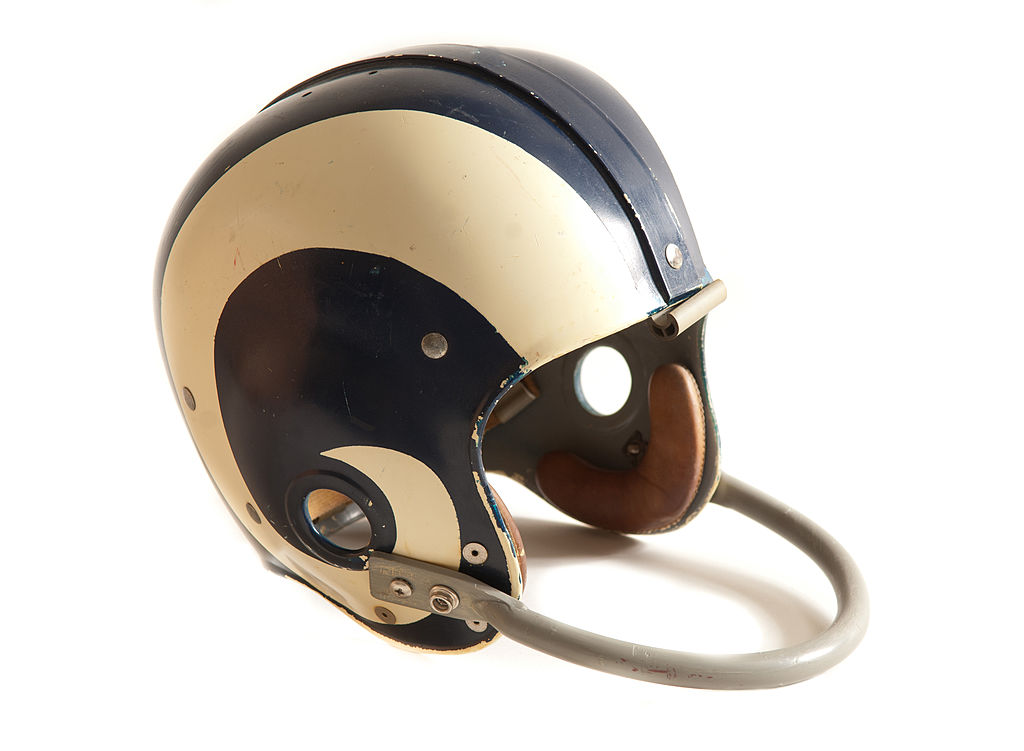NFL
History of the NFL Helmet

NFL helmets have been in the a topic of discussion recently as newly acquired Oakland Raiders wide receiver Antonio Brown has decided not to play if the NFL doesn’t allow him to wear his preferred helmet.
While Brown’s choice of headgear is currently not approved, it shows the radical changes in NFL helmets over the years. NFL.com recently provided a retrospective on the evolution of the NFL helmet from the league’s origins to today. Let’s take a closer look at the history of the NFL helmet and how it has evolved over the years.
1920s
This iteration of the NFL helmet was the soft leather style. It was definitely the leanest edition before the league saw the importance of protecting the player’s heads.
1930s
In a slight upgrade from the ’20s version, the ’30s saw the NFL move to a hard leather version. It wouldn’t be until 1939 that the John Riddell company would invent and patent the first plastic helmet.
1940s
The ’40s saw the NFL continue to use hard leather helmets, but with several innovations introduced as well including a chin strap, graphics on the helmet, and eventually an official move by the NFL to plastic helmets. In 1943, the NFL made it a requirement for every player to don a helmet during a game.
1950s
As plastic helmets became the norm, the ’50s saw even more development that moved the helmet closer to its current form. Today, facemasks are common on all helmets, but it wasn’t until 1955 that every helmet would have a single bar added.
In 1956, the Cleveland Browns added a small radio to their helmet. This would be the precursor of today’s game where the quarterback and a defensive player are allowed to have a radio installed to communicate with the sideline.
1960s
By 1962, facemasks became a requirement for every NFL player as the NFL adopted the double bar facemask. This would help decrease the chances of approaching players getting a hand or finger stuck in a player’s mouth or eye.
1970s
With the NFL helmet closely resembling today’s helmet, the ’70s saw a few major innovations. First, in 1971, Riddell implemented an air bladder system to every helmet. This was meant to help absorb the energy of the massive impact NFL players felt when colliding. Then in 1975, the first full facemasks began to appear.
1980s
The 80s saw the onset of molded polycarbonate shells into NFL headgear. This substance is also included in bike helmets. Why polycarbonate? The website Creative Mechanisms explains:
“Polycarbonate is an incredibly useful plastic for applications requiring transparency and high impact resistance. It is a lighter alternative to glass and a natural UV filter, so it is often used in eyewear.”
1984 saw the first protective visors, while the first polycarbonate helmet came on the scene in 1986.
1990s
The ’90s saw the continuation of polycarbonate helmets and the addition of the facemask grill, popularized by defensive players. A 1998 rule also required all facemasks to be transparent.
2000s
While it had been a while since anyone outside a punter wore one, in 2004 the NFL formally banned the single bar helmet. As concern grew around an increase in concussions, Riddell developed a model known as the “Revolution helmet” designed to reduce the number of concussions players were exposed to.
Today
In the modern era, player safety and head injuries are a big topic of conversation. The league continues to look at new ways to protect not just its players but younger generations of football players as well. In 2011, the league added an “impact indicator” to the chin strap meant to identify the type and severity of a player’s head injury.











